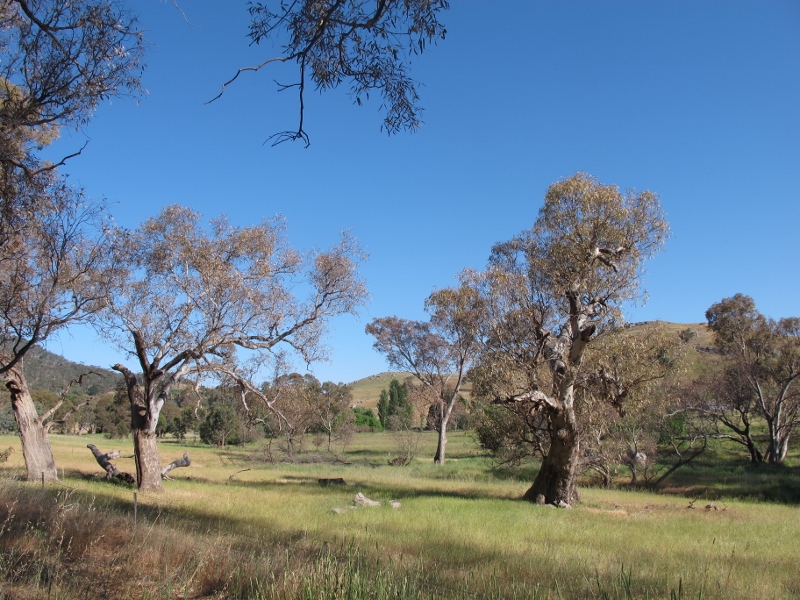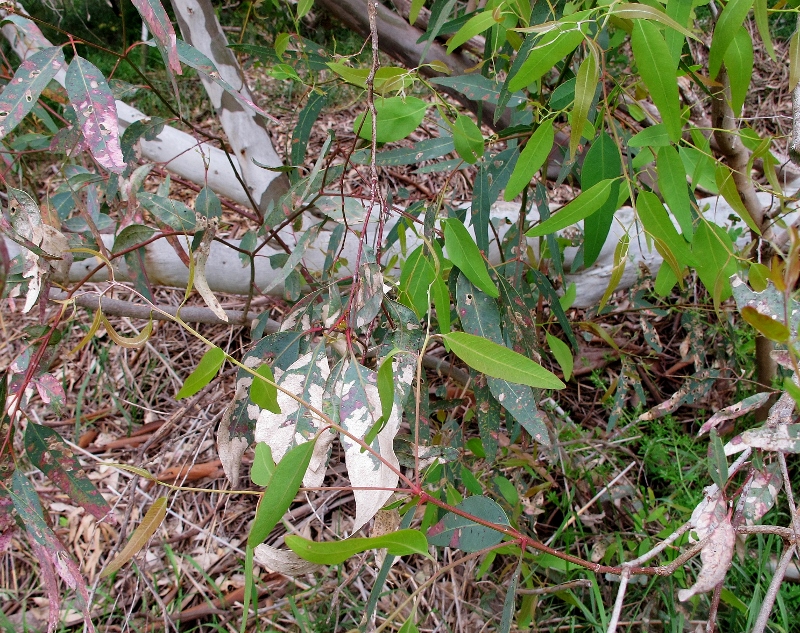So, what’s going on with our River Red Gums?
We noted last year how lots of them were looking pretty dire, and this year is, if anything, worse: whole roadsides and paddocks in this region and beyond are looking pretty desolate where the Red Gum is the dominant tree.
The main culprit, it seems, is the Psyllid lerp, a leaf munching creature whose larvae suck out the nutrients from the tree leaf. The result is often the eventual death of the leaf, and the presently common spectacle of trees with sparse or dead looking foliage.
The good news is that these infestations come and go, and in the natural order of things, the trees come back. If you look closely at some of the apparently terminal trees around the place, you can see fresh leaf growth coming on. And we’ve had the experience of the Stringybark forests in the south of our region a few years ago being absolutely stripped by colourful but gluttonous cup moth larvae. They recovered.
The potentially bad news is that distortions in natural conditions may make the trees less resistant to such attacks. Extended drought conditions, for example, may not only weaken trees, but cause bird populations to decline.
This latter is important because birds—specifically pardalotes—are among the most effective predators of Psyllid lerps.
The moral of the story is: maintain forest and woodland resilience by protecting diverse understorey habitat for important birds and insects, and creating vegetation corridors to link vulnerable tree populations.






 Click on image for info/order page
Click on image for info/order page Click on image for info/order page
Click on image for info/order page Click on image for info/order page
Click on image for info/order page






















Not looking good for old man Red Gum. If they can survive lerp and caterpillar attack they may still fall foul of the Roads Board who are happy to fell them up hill and down dale. They want to knock over old giants at Beaufort in the n ame of a speedy highway. Not far as the crow flys over near Bendigo an entire woodland bit the dust for the Ravenswood interchange and still cutting and bulldozing as I write. I haven’t mentioned the “planned” burns that take out many mature trees and of course trendy Melbourne suburbs need a log fire in in the worlds most liveable city.
You’re right about Vicroads, Lon: the destruction at Beaufort and Ravenswood speak for themselves. Fire officers tell us they never conduct planned burns in Red Gum woodland, but if you know of any such exercises, let us know.
We’ve found that a tree heavily laden in mistletoe and struggling slightly, can’t recover if they get a cup moth infestation. It’s too much for them.